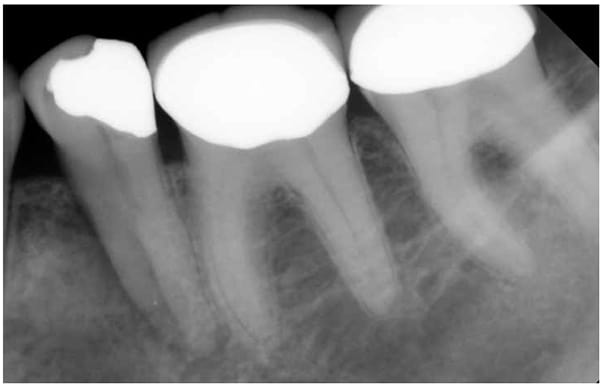Dr. Rich Mounce discusses a superior method for cleaning canals
As an endodontist, whether challenging teeth or challenging patients (or both combined), the world inside my operatory is often complex due to the fact that to date, there is no magic wand to non-negotiably clean canals efficiently, predictably, and safely.

Such challenges are met at the operatory door often by a “cookbook” clinical approach marketed by the dental industry and manifested as single file instrumentation and single cone obturation techniques (among many such concepts) sold with an emphasis on speed, simplicity, and cost savings. While these materials and techniques look great on paper and do most often work, the cookbook algorithm is not a substitute for sound principles, knowing where iatrogenic danger is present and what is in the patient’s best interest (especially with regard to restorability). The cookbook often meets the real world at places called a separated file, canal blockage, and apical extrusion, fractured roots, among many potential clinical misadventures. Using an algorithmic (cookbook) approach in the case pictured in Figure 1, (tooth No. 20) is the harbinger of a problem.
My company, MounceEndo, markets a wide variety of endodontic products, the same products I use in my fulltime endodontic practice. As an owner and clinician, should I market a one-size-fits-all approach, or provide a broad base of options? Emphatically, my answer is “no” to the cookbook and “yes” to the options. When the tooth has not read the cookbook, iatrogenic issues are soon to follow. In the operatory, where it matters, clinicians should have options and be able to change the recipe at will, as long as the destination is the same, optimal three-dimensional cleaning, shaping, and obturation of the canal system.
It bears asking, is reciprocating single file or carrier-based obturation the solution for every canal encountered? If you ask a salesperson, the likely answer is “yes”. Inside the operatory door, my answer is “no”. If these and other technologies and materials are all superior, why are there so many options, and why do some manufacturers sell so many different systems within the same category, for example, multiple instrumentation systems? I suspect in large measure, because at the present time, none is truly superior. If any one system or method were truly superior, we would all be using it, and all the time!
The above notwithstanding, my reading of the tea leaves is that in the foreseeable future, the myriad array of ever-evolving instrumentation and obturation methods will, to one degree or another, become obsolete with the emergence of a new and novel disruptive canal cleaning technology called Sonendo® (Sonendo.com).
Sonendo, a multisonic cleaning method, is the future of the endodontics. The technology, now being tested at multiple levels, with breathtaking results, is highly effective, easy to use, and comfortable for the patient. Sonendo will likely settle the debate about optimal methods and materials for any given anatomy — this may be the first true universally accepted “superior” method of cleaning canals. I really wish Sonendo had been available for the case pictured in Figure 1! It is the closest thing I believe we will see to a magic wand for generations to come. Stay tuned.
For the present, until Sonendo or a facsimile arrives, when the cookbook is not working, what next? The astute clinician, while having favored materials and techniques, must foresee where iatrogenic events lurk and be able to turn on a dime using a new recipe to complete the procedure to the highest standard possible, given a challenging patient, challenging tooth, or a combination of both.
Regardless of which clinical space one lives in, endodontist or generalist, the best procedure is one where the materials and techniques employed are chosen individually for the specific indication, not made to fit from limited options. Patient and doctor, and ultimately the profession, will all be the better for it. I welcome your feedback.
Stay Relevant With Endodontic Practice US
Join our email list for CE courses and webinars, articles and more..

 Dr. Mounce is in fulltime endodontic practice in Rapid City, South Dakota. He has lectured and written globally in the specialty. He owns MounceEndo, an endodontic supply company also based in Rapid City, South Dakota.
Dr. Mounce is in fulltime endodontic practice in Rapid City, South Dakota. He has lectured and written globally in the specialty. He owns MounceEndo, an endodontic supply company also based in Rapid City, South Dakota.